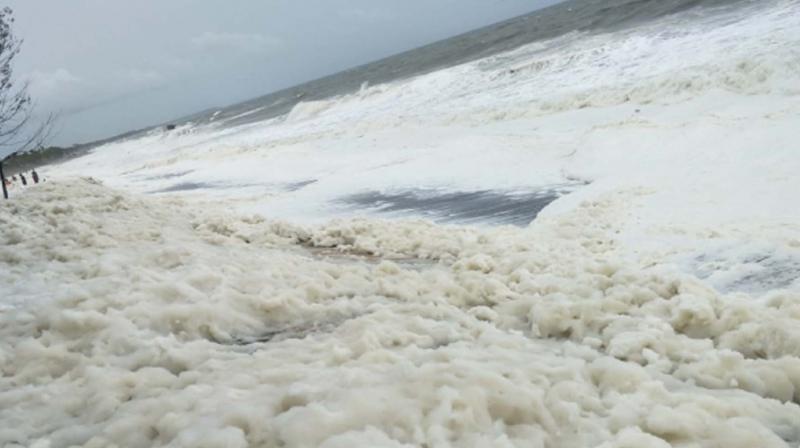‘Algal bloom’ behind sea foam in Kollam

KOLLAM: The foam accumulated at Mundakkal along the coast of Kollam has been found to be 'harmful algal bloom' by the researchers of National Institute of Oceanography, Ernakulam. It will adversely affects the availability of fish, according to a study report by a team under marine biologist N.V. Madhu.
The algal bloom that occurred on the shore on June 8 started waning by June 10. Earlier, a research team from Kerala University of Fisheries and Ocean Studies (KUFOS) had said that it was non-toxic and that the phenomenon was associated with the strong wind and wave action on higher concentrations of dissolved organic matter (DOM).
Mr Madhu's report said phaeocystis globosa, a genus of algae belonging to the prymnesiophyte class and to the larger division of haptophyta, caused the foam formation.
The uncontrolled growth of this species of algae has contributed in the formation of a floating colony, which is one of the unique attributes of phaeocystis.
Hundreds of cells are embedded in a polysaccharide gel matrix, which can increase massively in size during blooms.
The presence of chemical nutrients like nitrate has catalysed the growth of the algae, as per the study which also observes that the phenomenon is quite rare in the Indian subcontinent as phaeocystis globosa is normally found in polar and seas in cold regions.
The KUFOS report said earlier that the foam contained higher concentration of an algal species, noctiluca sp., a dinoflagellate phytoplankton, which underlined the possibility of occurrence and crash of an algal bloom.

